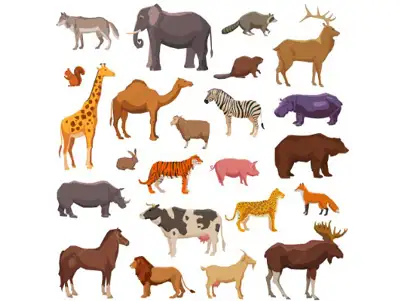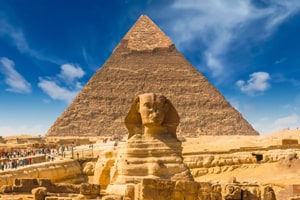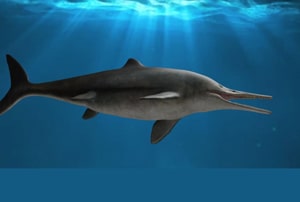English Documentary on Dinosaurs with Transcript, illustrated flashcards and a podcast to improve your reading and listening abilities and expand your vocabulary knowledge
Source of documentary: National Geographic YouTube Channel
Dinosaurs
Probably no other creatures on the planet have struck as much fear and awe in our hearts as the dinosaurs. The earliest dinosaurs appeared about 245 million years ago during the Triassic Period, when most of the Earth’s landmasses were still joined together, as the super continent, Pangaea. Over millions of years, Pangaea split apart, causing the dinosaurs to become separated for the very first time. This led the reptiles to adapt to their specific habitats and diversify, giving rise to many new dinosaur species.
Dinosaur species
According to some estimates, more than 1,000 species of dinosaurs have roamed the Earth. All dinosaurs descended from reptiles called Archosaurs. From there, dinosaurs branched out into two major groups, Saurischia and Ornithischia, based on the shape and orientation of their pelvis.
In Saurischian dinosaurs, such as Tyrannosaurus Rex and Brachiosaurus, the pelvis’ pubis bone faces forward and down. In Ornithischian dinosaurs, such as Stegosaurus and Hadrosaurs, the pubis bone faces backward and down.
Dinosaurs in various sizes
Across both groups, dinosaurs varied greatly in size. Some were small, like Compsognathus, which was barely larger than a chicken, whereas others where gigantic, like Dreadnoughtus, which was 85 feet long and weighed 65 tons, making it the largest land animal to have ever lived.
Eating habits and lifestyle
Dinosaur diets varied as well. Herbivores, like hadrosaurs, evolved to have specialized teeth for grinding tough plant material. Carnivores made up roughly 40% of dinosaur species. Some predators, like the raptor Deinonychus, even hunted in packs. Social behaviors were also found in other dinosaurs. Footprints and trackways indicate that some of the ancient reptiles traveled together. Evidence also shows that herds may have made annual visits to certain sites to lay their eggs. But by around 66 million years ago, most dinosaurs died out, and the reason why, is still a mystery.
Why dinosaurs died out?
The most well-known explanation is an asteroid strike, but a multitude of factors may have contributed to this extinction. In fact, the dinosaur population was already in severe decline by the time the asteroid struck. However, several dinosaur species survived, and some of which evolved to become today’s birds.
The world has never again seen land creatures as great as the dinosaurs. But through their descendants and fossils left behind, their legacy lives on.




When I was a child, I used to read encyclopedias, and dinosaurs were one of my favorite topics. I was very curious about what they looked like, their different species, and their features. Their extinction was mysterious and ambiguous to me. I spent a lot of time reading and researching about them and watching documentaries about them on TV. This documentary reminded me of that period of my childhood and how fascinating these creatures were.
Excellent and well-written comment!
The era of dinosaurs was incredible and awe-inspiring, and so was their mysterious extinction.
I really liked this documentary because dinosaurs are my favorite creatures. I wonder what happens if dinosaurs come back to earth.Im also thinking that which dinosaur was the strongest dinosaur on Earth.
I agree with you on dinosaurs being extraordinary and magnificent creatures.
Dinosaurs
Probably no other creatures on the planet have struck as much fear and awe in our hearts as the dinosaurs. The earliest dinosaurs appeared about 245 million years ago during the Triassic Period, when most of the Earth’s landmasses were still joined together, as the super continent Pangaea. Over millions of years Pangaea split apart, causing the dinosaurs to become separated for the very first time. This led the reptiles to adapt to their specific habitats and diversify, giving rise to many new dinosaur species.
Dinosaur species
According to some estimates, more than 1,000 species of dinosaurs have roamed the Earth. All dinosaurs descended from reptiles called Archosaurs. From there, dinosaurs branched out into two major groups, Saurischia and Ornithischia, based on the shape and orientation of their pelvis. In Saurischian dinosaurs, such as Tyrannosaurus Rex and Brachiosaurus, the pelvis’ pubis bone faces forward and down. In Ornithischian dinosaurs, such as Stegosaurus and Hadrosaurs, the pubis bone faces backward and down. Across both groups, dinosaurs varied greatly in size. Some were small, like Compsognathus, which was barely larger than a chicken, whereas others where gigantic, like Dreadnoughtus, which was 85 feet long and weighed 65 tons, making it the largest land animal to have ever lived.
Eating habits and lifestyle
Dinosaur diets varied as well. Herbivores, like hadrosaurs, evolved to have specialized teeth for grinding tough plant material. Carnivores made up roughly 40% of dinosaur species. Some predators, like the raptor Deinonychus, even hunted in packs. Social behaviors were also found in other dinosaurs. Footprints and trackways indicate that some of the ancient reptiles traveled together. Evidence also shows that herds may have made annual visits to certain sites to lay their eggs. But by around 66 million years ago, most dinosaurs died out, and the reason why, is still a mystery.
Why dinosaurs died out?
The most well-known explanation is an asteroid strike, but a multitude of factors may have contributed to this extinction. In fact, the dinosaur population was already in severe decline, by the time the asteroid struck. However, several dinosaur species survived, and some of which evolved to become today’s birds.
The world has never again seen land creatures as great as the dinosaurs. But through their descendants and fossils left behind, their legacy lives on.
Thank you so much indeed. That was perfect!